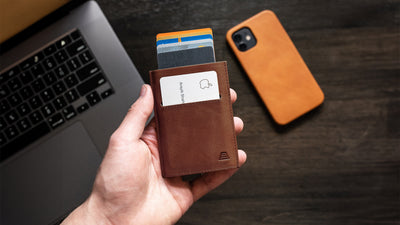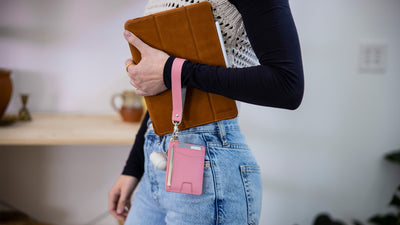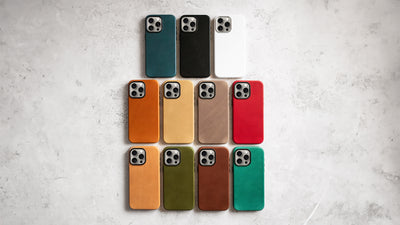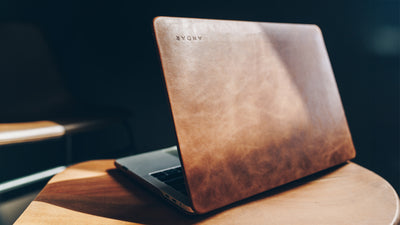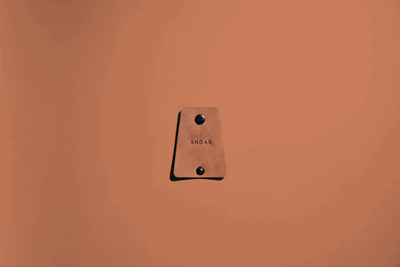The Blog
How To Condition Leather: Everything You Need To Know
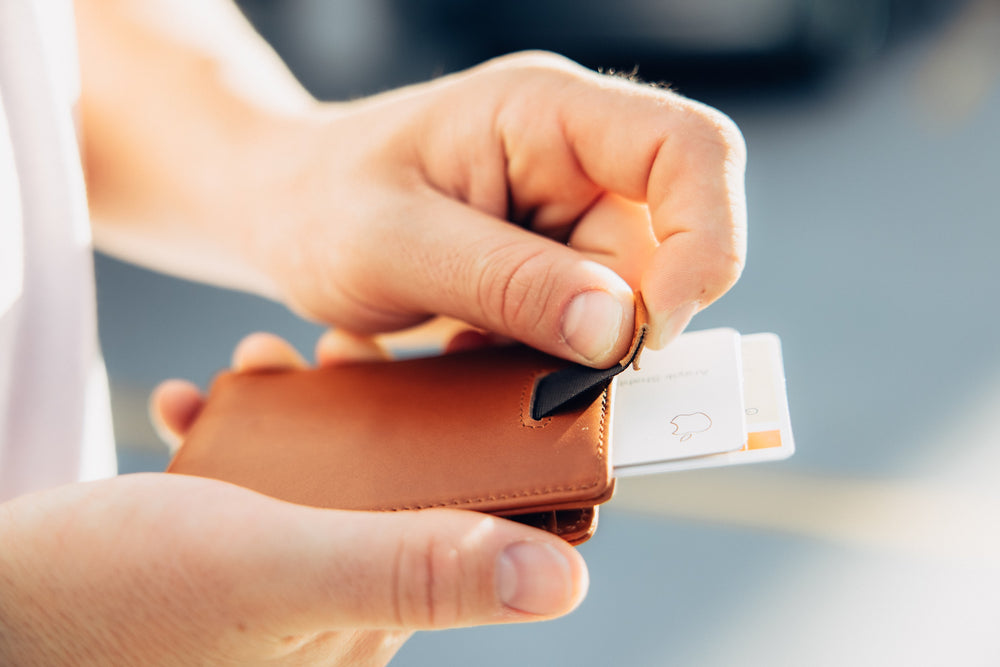
Durability is a disappearing element of many parts of our lives. Some believe that technology is designed to break down after a few years. For example, cars are more efficient but more susceptible to breaking down due to increasingly complicated technology in high-use areas.
Though it may seem to be the new way of things, there are many materials that have kept durability as a high standard in their manufacturing. As easy as it is to think that things will tend this way, some industries are actively moving to higher durability standards.
Of the main reasons why leather is one of the most sought-after textiles, its ability to take abuse without looking tattered is near the top. It is still looked at as an industry that cares about durability and its longevity.
Perhaps the most important aspect of leather’s ability to take damage is that it is supple enough to take abuse and bounce right back. Only the highest quality leather, full-grain, has the ability to do this through years and years of wear and tear. However, even the highest quality of full-grain leather needs to be conditioned to keep it at peak performance.
Keeping leather conditioned is very important, and we at Andar want your leather to last as long as it should and as long as it can. This article will cover all you need to know about conditioning leather so that you too can be an expert.
What Leathers Can Be Conditioned?
When you dive into this question, there are actually some surprising truths. There are a lot of leathers out there that don’t need/shouldn’t be conditioned. So, we have laid out what leathers can and what leathers cannot be conditioned.
All grain leathers can and should be conditioned regularly. We at Andar believe in the superiority of full-grain leather with our full line of products. When you buy this beautiful leather, cleaning it is as important as watering a plant. Full-grain and top-grain leather need some TLC to retain their stunning qualities.
When it comes to corium-based leather such as suede, split leather, and genuine leather, conditioning does not need to be done, and in some cases, cannot be done.
Suede should not be conditioned using the methods we talk about here. It can be cleaned, but the conditioner will get caught in the fibers and damage the textile more than help.
Split and genuine leather can be conditioned to varying success rates. Since there is a large spectrum of suppleness in these types of leathers, it is hard to give hard and fast rules on this front. If the leather seems somewhat porous and soft, conditioning will work somewhat, but if it is dyed an unnatural color and appears stiff, conditioning will not be as effective.
These are not hard and fast rules, but the effectiveness that conditioner has on a piece of leather comes down simply to its level of porousness. If it does not have a lot of open pores, the treatment on the leather will not allow the conditioner to take hold.
Clean Your Leather
The first thing you should do with your leather is to clean it. Because so much dirt and grime get trapped in your leather (especially the creases), the debris will keep your conditioning from truly taking hold in the pores of the leather. So, the first thing you must do is clean your leather.
This guide will touch on the main tips and tricks for cleaning. This is an important step that cannot be skipped, especially with full-grain leathers. Conditioning leather is super important, but it doesn’t really have the same effect without regular cleaning. It’s sort of like dental care — flossing your teeth is essential but doesn’t do much if you never brush those pearly whites.
The first and most important item through this whole guide is a lint-free microfiber cloth. If you do not have one of these, wait to start the process until you do. Other fabrics have the potential of damaging your leather. Microfiber cloths can be easily found at department and auto stores, so get up and get yourself a couple of these handy rags.
Next, fill a bowl of water. Get your rag lightly damp as too much moisture is not good for your leather (especially if it is porous). With your rag, wipe your leather down softly but thoroughly. Make sure to get in all the cracks and crevices that dirt can hide in.
Wallets are especially important for this as a little piece of dirt on the corners of your leather wallet can wreak havoc over time. For slimmer wallets such as our Ranger, this is not as common. But structurally complex wallets such as our Ambassador have many little areas that might hide debris, so be thorough when cleaning.
Once the piece of leather is cleaned, allow it to dry for at least a few hours in a cool, dry room away from sunlight. A closet could be good for this. Once it is dry, it is time to condition.
Condition Your Leather
Once your leather has dried, it is extremely susceptible to anything that happens to it, so be sure to keep it away from excess moisture, heat, cold, sunlight, or anything that would otherwise damage your piece of leather. This is one of the more vulnerable states for your leather since it is without any oils or dirt to protect it.
The Leather Cream
Now it is time to choose your leather conditioner. We at Andar have formulated The Leather Cream as an easy, one-stop solution for leather conditioning.
Using our knowledge of the pH levels critical to the leather tanning process, our cream has been formulated to serve two purposes. Not only will this cream condition your leather for now, but it will also seal it for better moisture and defense against dirt, dryness, and wear in the future.
We have also formulated this cream to speed up the time it takes for your leather item to develop a patina. The patina is the natural wear and scratch marks that appear on full-grain leather that signal its quality. We are in love with a good patina, so our leather cream has been made to not only speed this up but do so in a healthy way that does not damage your leather long-term.
Steps to the Perfect Condition
Simply apply a little bit of the leather cream to your piece of leather. Less is more when it comes to cream application. Over-conditioned leather will actually wear faster and become rank as the filled pores rot and become rancid. So, only a little bit is necessary.
Gently work the leather cream into the leather in circular motions for best effectiveness. You do not need several layers of the conditioner for it to work. One layer will do fine, but make sure you work it into all parts of the leather and do not allow it to clump up in the creases or cracks.
Once you have done this, with an unused rag, wipe off all excess conditioner. This will ensure that you do not have too much on. It is okay to wait a few minutes before doing this, but make sure it’s not too long, and you get all the cream off.
After, once again, allow the leather to dry. Because of leather’s chemical makeup, allowing it to dry for at least 24 hours is recommended not to change the makeup of the leather through friction and weather exposure. This is when leather is at its most vulnerable, so ensure its safety.
Try to dry it in the shape of how you use it. For example, a leather belt should not be folded up to dry, or else the kinks will show. This is because it is more malleable and shapeable than when it is dry. The pores have soaked up the conditioner and can be moved and shaped more easily. Keep it in its intended shape if possible for best results.
Once it has dried, it is ready for use and will be ready to take on whatever you throw at it!
Tender Leather Love and Care
At the end of the day, taking care of your leather is the best way to protect your high-quality fashion and lifestyle utilities. Leather is made to last, but you have to do your part to help it along the way.
This will also help keep its beautiful color, feel, and patina, so there are aesthetic reasons to condition your leather as well. Treat your leather as an old friend: routine love and attention can help your leather flourish.
Sources:
New Tech-Filled Cars Break Down More Often Than Older Cars | Fast Company Magazine
What's That Stuff? Leather | Pubs App
The Chemistry of the Leather Industry | New Zealand International Convention Center
